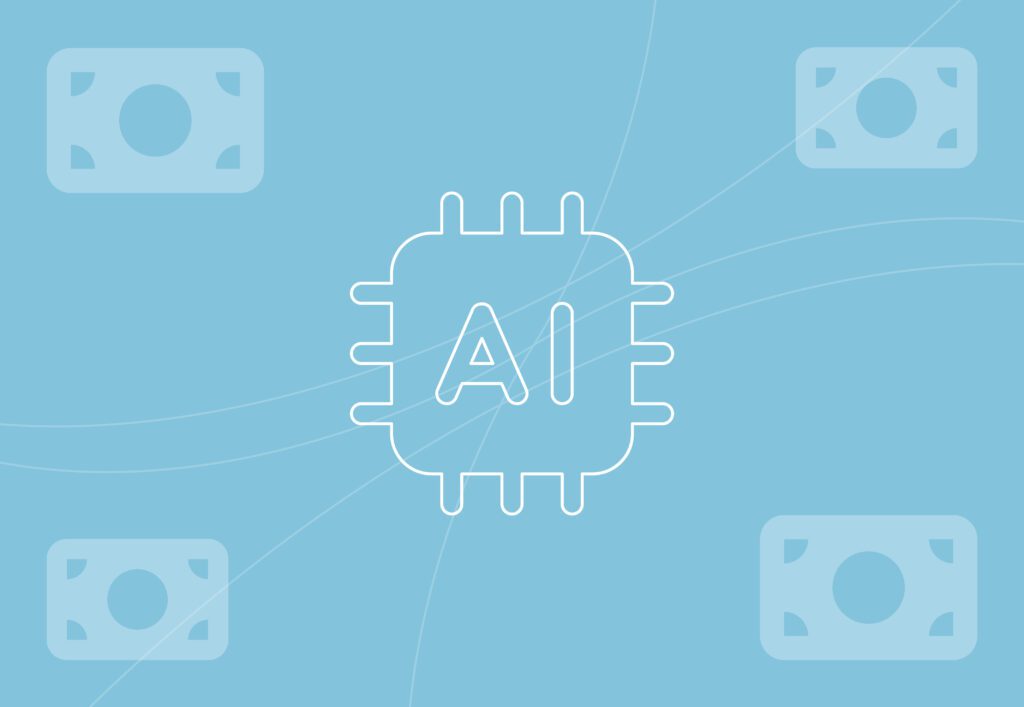
AI in e-commerce: Use cases and how to get started

Over the years, e-commerce has grown exponentially with the help of giants like Amazon leading the way. However, this has also put in place expectations from shoppers now to expect faster delivery, personalised experience and instant answers whenever they may need them.
One of the few connected areas going at an even faster rate to assist with these issues is AI, but a large number of businesses are struggling to understand:
- How AI can actually help
- When will the hype end? [if it does]
- How they can get started – without breaking anything
The positive is that a large number of e-commerce sites have already adopted AI into their workflow/processes in some regards, with Capital One Shopping finding that around 80% of e-commerce businesses are using AI already, even for simple tasks such as search improvements or recommendations.
Throughout this blog, we will focus not on ‘Should I be using AI’ but more on which areas of your business could AI improve the most in the coming months and years. We will cover:
- What AI in e-commerce really means
- Why businesses are investing in it heavily already
- Practical use cases across customer experience, marketing and operations
- A simple roadmap to get started
- Common pitfalls to avoid (if possible)
- Real examples from brands already making it work
What is AI in e-commerce?
AI in e-commerce is simply the software that learns from your customers’ shopping data and helps you make better decisions, or automate areas you would usually carry out manually. This includes:
- Machine learning: spotting patterns in what customers browse, buy, or frequently return
- Generative AI: writing copy, creating images, or producing product descriptions
- Automation: doing repetitive tasks on autopilot, like sending reminders or updating product recommendations
There are two types of AI you’ll frequently come across handling these types of tasks:
- Custom-built AI: often powerful but expensive; usually for enterprise-sized retailers
- Off-the-shelf tools: built into platforms you’re already using: search, email, product recommendations, forecasting, chatbots, etc
This doesn’t mean, however, that to get started, you need to spend a lot of money to get a custom build. Most brands only need to utilise the right tools that plug into their existing setups and can start producing results within days or weeks.
Where does AI fit within the e-commerce journey?
As AI continues to develop, it’s already a tool that can support in almost every stage of a user’s ecommerce journey, such as:
- Finding products: Smarter search function, content and ads
- Browsing & Buying assistance: Providing personalised recommendations, live product help via chat and better merchandising
- Post-purchase support: Customer support, returns and customer retention
- Behind the scenes: Forecasting, logistics, pricing & fraud checks
AI in e-commerce use cases:
Below are 10 practical use cases for how an e-commerce business can make the best use of AI to save money, save time, or simply make life easier.
Product recommendations & on-site personalisation
Most online stores show the same products to everyone through a more static or strict format; AI has the ability to tailor this experience to each user. AI looks at what exactly people are browsing, buying and overall engaging with, then suggests:
- “You might also like…”
- “Frequently bought together”
- Recently viewed items
- Bundles
This is great for helping customers discover additional products in a more natural fashion and increasing the chance they’ll add more to their basket.
Where it’s used: Homepage, category pages, product pages, basket, post-purchase emails
Benefits: Increases the likelihood of cross-sells, can improve repeat purchase rate and overall increase a higher average order value.
Key Metrics to monitor: Average Order Value [AOV], recommendation click-through rate, revenue from recommended items, repeat purchase rate
Smarter on-site search
Most e-commerce sites still have a very straightforward search system in place, where, unless a customer types in the exact product, the results tend to be mixed. By implementing AI-powered search into the mix, you allow it to understand intent instead of purely keywords.
It can:
- Interpret natural phrases/searches – “running shoes red under £100”
- Understands product attributes better
- Supports voice search on mobile
- Allows use of visual search – where customers upload an image and see similar products
Where it’s used: Search bar, product discovery, category navigation
Benefits: Improved search allows for more conversions, as customers find the right product sooner
Key metrics to monitor: Conversion rate from search, % of “no results” queries
AI shopping assistants & chatbots
Chatbots have been around for a long time; however, with AI development, this isn’t the same old-fashioned set-up. They can now ACTUALLY help users by:
- Answer common product queries
- Guidance around sizing or fit
- Suggesting potential alternatives when items are out of stock
- Updating customers on delivery status
- Helping compare products
This helps reduce the time spent by the team answering user queries, especially when they are simpler and straightforward. It also allows users the same benefits, with them able to get a quick response at any time of day, without having actually to speak to a human!
Where it’s used: Website chat widgets, WhatsApp/Messenger, in-app chats
Benefits: Gives customers 24/7 support, to help save time and guide users to a purchase faster
Key metrics to measure: First-contact resolution, bot vs human deflection rates, response time, customer satisfaction
Return reduction through fit & preference prediction
Every business has to deal with the constant pain of returns, for any number of reasons. For ecommerce stores, this can often be due to size, style or fit… especially in fashion and homeware.
AI is able to help spot patterns within these returns, such as:
- Which size is a customer most likely to keep
- Which items tend to run small/large
- Which materials tend to get returned the most
- Which colours/styles are often preferred
From here, AI is then able to help guide users directly on the product page = “This item tends to run small, consider sizing up”, or flag risky items internally, for the team to rework imagery, descriptions or the offering.
Where it’s used: Size guides, PDP fit recommendations, merchandising dashboards
Benefits: A reduction in returns = more profit
Key metrics to measure: Return rate by SKU, reasons for return
AI-Powered Email, SMS and CRM Campaigns
A large majority of brands are still sending out emails to everyone. AI helps you to tailor the messaging of these every step, by:
- Suggesting and testing new subject lines
- Choosing the best time to send to specific audiences/users
- Predicting who will churn
- Recommending the next product that customers are likely to be interested in
- Creating dynamic content personalised to users
By utilising AI in these methods, you can greatly enhance your CRM team by allowing AI to run tiny tests and experiments in the background automatically, and outputting the best methods it’s found.
Where it’s used: Email platforms, CRM automations, SMS tools
Benefits: by providing more relevant messaging – higher engagement, better customer lifetime value, and likely more conversions
Key metrics to measure: Open rate, click rate, unsubscribe rate
Smarter & smoother paid media & advertising
AI can help advertising teams move way faster and make smarter decisions, through:
- Automatic creation and testing of ad variations
- Spotting trends of which headlines/images are performing best
- Predictive analytics on which audiences will convert
- Budget allocation to the highest-performing ads in real time
This allows the advertising teams to cut out chunks of the guesswork usually involved and gives your campaigns a continuous loop of improvement. PPC teams can now make strong use of AI within their campaigns, helping them to make faster decisions.
Where it’s used: Google Ads, Meta Ads, TikTok Ads, programmatic platforms
Benefits: You tend to get better results from the same ad spend and overall waste less budget
Key metrics to measure: ROAS, impression-to-click-to-conversion funnel
AI-enhanced content optimisation & SEO growth
AI and SEO often go hand-in-hand nowadays, and e-commerce is yet another area where this is happening. It’s becoming an increasingly powerful ally for e-commerce SEO, not by writing all your content, but by actually helping internal teams make smarter decisions about what to create, how to optimise and where key opportunities may be missed.
AI tools are now helping to:
- Identify pages that could benefit from ranking improvements (low-hanging fruit)
- Spot gaps in your category, product-level or even brand content
- Analyse what top competitors are doing well
- Suggest internal linking improvements
- Recommend content updates to match search intent
- Surface trending keywords to target
While this only scrapes the basics of SEO within e-commerce, it’s a solid jumping-off point. The one pitfall to avoid is using AI to write all your content for you; this is a big no-no, and Google is very good at spotting it. Ensure you check your content to see if it’s viewed as written by AI.
Where it’s used: Content and SEO optimisation tools (plugins), ecommerce CMS, internal linking audits, etc
Benefits: It helps to develop a groundwork for your SEO and helps you develop content that customers are actually searching for
Key metrics to measure: Keyword movement, organic traffic growth, click-through rate, search-led conversions
Image taken from Shopify – SEOAnt
Demand forecasting & smarter inventory planning
Instead of trawling through huge amounts of data from last years numbers and making your considerations, AI forecasting helps skip to the fun part and highlight:
- Sales trends
- Seasonality
- Stock levels
- Marketing campaigns
- Price changes
This kind of quick information can greatly help your team understand demand early, order smarter and avoid costly over- or under-stock situations
Where it’s used: Inventory dashboards, merchandising planning tools
Benefits: You’re able to keep your bestsellers in stock, reduce any waste and improve the reliability of your supply chain
Key metrics to measure: Forecast accuracy, stockouts, overstock %
Dynamic pricing & promotion optimisation
AI can analyse demand, competition and stock levels to recommend any small pricing changes/adjustments or smart promotional strategies at the drop of a hat.
For example, if you’ve got a product that is massively overstocked and moving very slowly, AI might be able to suggest some light promo to help shift the inventory.
On the other hand, for fast-selling bestsellers, it can help recommend set margins instead of discounting.
Where it’s used: Pricing software, promotional planning, marketplace tools
Benefits: You’re able to stay competitive while still protecting your margin
Key metrics to measure: Gross margin, promotion ROI, price index vs competitors, sell-through rate
Fraud prevention & risk scoring
You can utilise AI to help quietly protect checkout by looking for any unusual patterns, such as:
- High-risk locations
- Mismatch billing/shipping details
- Suspicious payment behaviour
It’s then able to blog or flag any risky-looking order before they cause any chargebacks, all without making life any harder for genuine customers.
Where it’s used: Checkout, payment gateways, order review queues
Benefits: A smoother method means less fraud, fewer chargebacks and fewer real customers being falsely blocked
Key metrics to measure: Chargeback rate, fraud losses, false-positive rate
Real examples: Where big brands are actually using AI
Amazon – Helping make product discovery effortless
Being one of the pioneer e-commerce sites, Amazon is one of the clearest examples of AI in action. When you browse the site, almost everything you see, from product suggestions to search results, is helped by AI.
The simple ways they use it are:
- When you view an item, Amazon instantly suggests related products based on similar shoppers’ purchases
- If you search for something, AI helps find what you meant
- Amazon also uses AI to help forecast demand to keep popular items in stock
This works incredibly well. Studies estimate that around 35% of sales on Amazon actually come from within its recommendation engine. It’s no secret that personalisation + great search + smart stock planning = happier customers and more sales.
Sephora – Helping customers choose
Sephora is known to use AI to help make their shopping experience easier, especially when customers are choosing shades, styles or routines – things that can often feel overwhelming.
They use AI to help them:
- Help stock availability – AI-powered forecasting helps Sephora keep bestsellers on shelves. During peak periods, AI has been used to help the brand significantly reduce stockouts and lower storage costs.
- From chat-based product advice to virtual try-ons, Sephora has been utilising AI to help guide customers to the products that suit them personally
- Their AI chatbot is on hand to answer quick questions, while still allowing human advisors to step in for anything more complex
The result of this? An online experience that feels far more personal and like the in-store experience.
Common AI mistakes e-commerce brands make
As with everything in the digital world, there are a few common pitfalls to try and avoid when utilising AI:
- Solution before the problem: Try to identify what areas of your ecommerce website could benefit from the use of AI, THEN find a suitable solution/tool and pull the trigger. Don’t just jump into it without a clear goal, understanding and KPI in mind
- Get your data basics right: Even the best AI model can’t make complete clarity and sense of messy data. Ensure your site is set up correctly, all your data is accurately collected, and there are no messy product attributes or poor tracking
- Don’t let AI run everything – AI is great, but there are still a lot of areas where it’s important to keep human oversight, especially for pricing and customer messaging. Use it as a tool to make life easier, not to do the whole job
Don’t forget the human touch – TechRadar’s research showed that people still prefer humans for important issues, to make sure escalation is easy!
- Measure everything – It’s easy to trust AI and assume it’s doing it all in the best way, but it’s important to measure everything you can. Without a controlled group, you don’t know what is working and what’s not
Overall, AI has the potential to greatly improve almost every single ecommerce business, IF it is utilised correctly. The way it is rapidly developing shows that businesses need to be jumping on board now, or be left behind.


